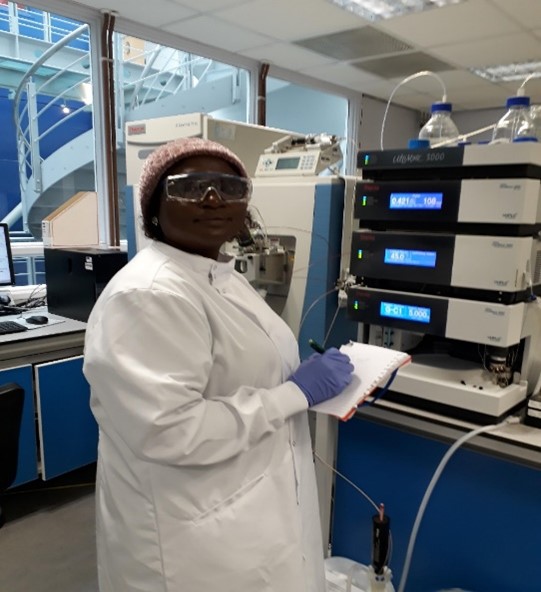
Natural plant extracts and products discovered from medicinal plants contain phytomolecules and have provided numerous drugs which are being used clinically for the management and treatment of various ailments. In spite of the various challenges encountered in the medicinal plant-based drug discovery, phytomolecules isolated from plants will remain an essential component in the search for further new medicines. Phytomolecules are naturally derived secondary metabolites present in plants and are responsible for eliciting pharmacological or toxicological effects in both animals and humans. The important phytomolecules include flavonoids, terpenoids, saponin, phenols, phenylpropanoids and alkaloids and are widely distributed in plants. The majority of plant extracts are not single compounds but rather a mixture of different molecules and are very often present in minute quantities and quite difficult to synthesize chemically, therefore these compounds must be extracted directly from plants in good quantities for pharmacological uses. However, their mechanism of action usually targets several organ and cellular systems and can give complementary or synergy effects.
Summary of some studies involving the activities of phytomolecules include:
1. Phytomolecules present in the crude leaf extract of Millettia aboensis include reducing sugar, alkaloids, flavonoids, saponins, tannins, phlobatannins and cardiac glycosides. Following ethanol plant extract administration of 2000 mg/kg, the level of haemoglobin concentration and its related indices were appreciably improved. This gives an indication that the plant extract may contain some phytomolecules that can stimulate the formation of secretion or erythropoietin in the stem cells of experimental animals thereby increasing erythropoiesis. This could possibly mean that the phytomolecules present in Millettia aboensis possess stimulatory effect on red blood cell production and could probably be used as a therapeutic agent in the treatment of anaemia. M. aboensis has been reported to possess antibiotic and hypoglycaemic properties.
2. Phytochemical screening of medicinal plants like Senna alata (L) Roxb indicated the presence of phytomolecules such as anthraquinones, flavonoids (mainly kaemferol), tannins (present as tannic acid), alkaloids (including coniine and coniceine), phenolic acids, saponins, and negligible amounts of quinones and acrylamides. The quantitative analysis of this plant extract showed the presence of high amount of some important phytomolecules such as tannic acid, quercetin, and kaemferol. The plant has been reported to possess some important pharmacological activities such as antidiabetic, hypolipidaemic, anti-oxidant, and analgesic, amongst others.
3. Aqueous leaf extracts of Dennettia. tripetala and Physalis. angulata demonstrated antioxidant properties by protecting the red cells from reactive oxygen species. Also, they were able to reduce the percentage of sickled cells, the rate of haemoglobin polymerization, and the osmotic fragility of human sickle RBCs. The study concluded that aqueous leaf extracts of D. tripetala and P. angulata possess phytomolecules which have anti-sickling potential and can be used for the treatment or management of sickle cell anaemia. Further study will help to uncover the critical areas of phytomedicine that many researchers were not able to explore. Thus a new theory on the management of sickle cell disease may be arrived at. Similarly, ethanol extracts of Annona muricata, Delonix regia and Senna alata have the potentials to reverse sickling in human sickle RBCs. This was shown in their ability to significantly decrease the rate of haemoglobin polymerization, the percentage of sickled cells, and the osmotic fragility of human sickle RBCs. They were shown to possess antioxidant properties which protect the red cells from oxidative damage caused by free radicals. The inhibitory/reduction activities of ethanol extracts of A. muricata, D. regia and S. alata could be due to the synergistic properties of bioactive compounds present in these plants. The study concluded that these plant extracts may be used for the therapeutic management of sickle cell anaemia. Also, phytomolecules extracted from Annona muricata, and Delonix regia have been reported as hypoglycaemic and hypolipidaemic agents which can be used in the management of diabetes and cardiovascular diseases.
4. The phytomolecules present in the leave extracts of Cnidoscolus Aconitifolius and Jatropha tanjorensis include alkaloids, flavonoids, tannin, cynogenic glycosides, terpenoid, resin and saponins. A study to investigate the analgesic potentials of aqueous leaf extracts of Jatropha tanjorensis and Cnidoscolus aconitifolius against hot plate and acetic acid induced pain on Wistar rats showed that the extracts, separately and synergistically has potential analgesic activity on the Wistar rats. This observation was based on the amber of abdominal writhes or paw licking in rats which showed a significant delay in reaction time and increase in pain latency in a dose dependant manner. By implication of the result of this study it can be inferred that the analgesic activity of these plants is most likely to be mediated peripherally and centrally.
5. The search for the use of herbal remedies as an alternative medicine for the treatment and management of cancer is on-going. My study evaluates the in vitro cytotoxic potential of ethanol leaf extracts of Physalis. angulata L., Parquetina nigrescens, and ethyl acetate extracts of Senna alata (L) Roxb and Annona muricata, on four different human carcinoma cell lines: MCF 7 (human breast), C4-2WT (prostate), HT 29 and HCT 116 (colorectal). Results obtained from the cytotoxic assays indicated that these extracts, at a very low concentration, inhibited the proliferation of the different human carcinoma cell lines in a time and concentration-dependent manner and therefore, may be considered promising and for further purification as an anti-proliferative agent against human carcinoma cells.
According to the WHO, 70-80% of the world population uses the plant-derived traditional methods for the treatment of various health problems. These phytomolecules are natural, available and cost-effective when compared to modern therapeutic agents and have proven to be useful as antibiotics, antidiabetic, antisickling and anticancer chemotherapy agents. This makes them more attractive as promising economic therapeutic agents. Therefore, there is the need for intensive research to elucidate the possible mechanism(s) of action at molecular and biochemical levels of these phytomolecules as therapeutic agents.
